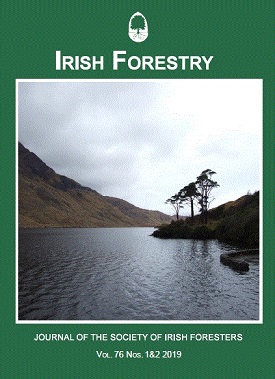Comparison of three inventory protocols for use in privately-owned plantations under transformation to Continuous Cover Forestry
Keywords:
Continuous cover forestry, transformation, irregular structure stands, forest inventory, inventory costs
Abstract
Interest is growing in Continuous Cover Forestry (CCF) as a management approach among private forest owners in Ireland. Developments in forest policy are directed at promoting CCF as a means of enhancing forest resilience, sustaining forest production and delivering diverse ecosystem services. In 2019 the Department of Agriculture, Food and the Marine (DAFM) introduced a new pilot funding measure to support the adoption of CCF management in suitable private forests. Currently the area of forest under CCF management is relatively small (estimated at around 1% of the total forest area) and several barriers to wider adoption have been identified. These include the lack of a simple template for the transformation of planted forests to CCF and a monitoring protocol with known inventory costs and outputs. In this study three inventory protocols were compared in terms of their ease of use, the types of data outputs and cost effectiveness in a forest stand at an early stage of transformation to CCF. These protocols were compared to a complete enumeration approach. The inventory protocols being tested were developed by the UK Forestry Commission (FCIN45), a group of French and Belgian researchers (VISUAL) and the Irregular Silviculture Network (ISN). Results indicate that by using modern technology and careful design, a cost-effective inventory protocol can be implemented to collect information of sufficient accuracy to inform management decisions. Advantages and limitations of each protocol are discussed. The ultimate outcome would be the development and adoption of a common inventory and monitoring approach to enable private owners to critically compare stand management and performance. This is essential to support and guide forest managers and forest owners during the transformation process.
Published
2019-12-30
How to Cite
Spazzi, J., O Tuama, P., Wilson, E. and Short, I. (2019) “Comparison of three inventory protocols for use in privately-owned plantations under transformation to Continuous Cover Forestry”, Irish Forestry, 76(1&2), pp. 8-28. Available at: https://journal.societyofirishforesters.ie/index.php/forestry/article/view/10949 (Accessed: 27July2024).
Issue
Section
Articles



